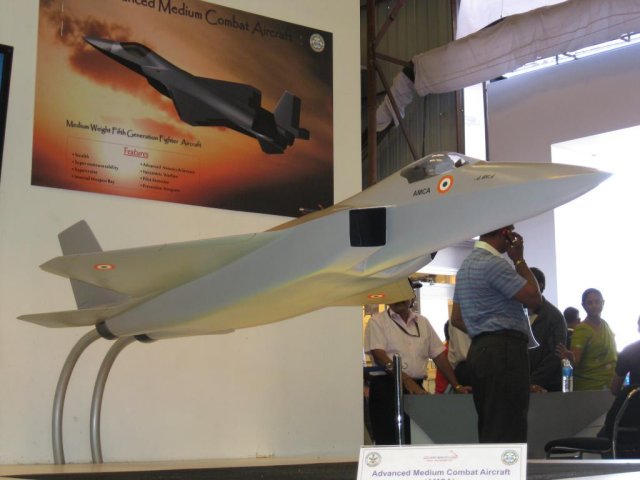Breaking news
India plans to kick-off future Advanced Medium Combat Aircraft development project in 2015.
| a | |||
| |
|||
World
Aviation Defense & Security News - India |
|||
| India plans to kick-off future Advanced Medium Combat Aircraft development project in 2015 | |||
India plans to
kick-off its own fifth-generation fighter aircraft (FGFA) development
project this year to build on the expertise gained in the long developmental
saga of the indigenous Tejas light combat aircraft. Top defence sources
on Wednesday said the preliminary design stage of the futuristic fighter
called the advanced medium combat aircraft (AMCA), with collaboration
among IAF, DRDO and Aeronautical Development Agency, is now "virtually"
over.
|
|||
 Scale-model of the future advanced medium combat aircraft (AMCA)
unveiled by India's Aeronautical Development Agency
Scale-model of the future advanced medium combat aircraft (AMCA)
unveiled by India's Aeronautical Development Agency
|
|||
"Once
the project definition and feasibility is completed in the next few months,
the defence ministry will go to the cabinet committee on security for
approval. It will require Rs 4,000-5,000 crore for the initial design
and development phase," said a source. The aim is to fly the first twin-engine AMCA prototype by 2023-2024, which will be around the time deliveries of Tejas Mark-II fighters will be underway. IAF is slated to get its first Tejas Mark-I in March this year, over 30 years after the LCA project was first approved in August 1983. But the Tejas Mark-II jets, with more powerful engines, will start to come only by 2021-2022, as was first reported by TOI. "After Tejas-II, we have to move ahead to a fifth-generation-plus AMCA. Basic design work of AMCA as well as presentations by five to six global aero-engine manufacturers is over. Simulation modelling is also in the works," said the source. India, of course,
is also trying to sort out its differences with Russia over their proposed
joint development of the Indian "perspective multi-role fighter"
based on the latter's under-development FGFA called Sukhoi T-50 or PAK-FA. A swing-role FGFA
basically combines advanced stealth, supercruise (capability to achieve
supersonic cruise speeds without use of afterburners), super-maneuverability,
data fusion and multi-sensor integration on a single fighter. India's next-gen aircraft will have adequate un-refuelled range on its internal fuel alone (the capacity to carry more fuel), thereby enabling it to cover theaters that are significant from the tactical point of view. “A substantial carriage capability on its external hard points will allow the aircraft to carry out regular missions of conventional fighters in later phases of a campaign including maritime operations,” sources said. The critical stealth technologies that are currently being developed include: radar absorbing structures and paints, body conformal antennae with shared aperture, flush air data sensors and frequency selective surface (FSS) radome. (Source: The Times of India) |
|||



















